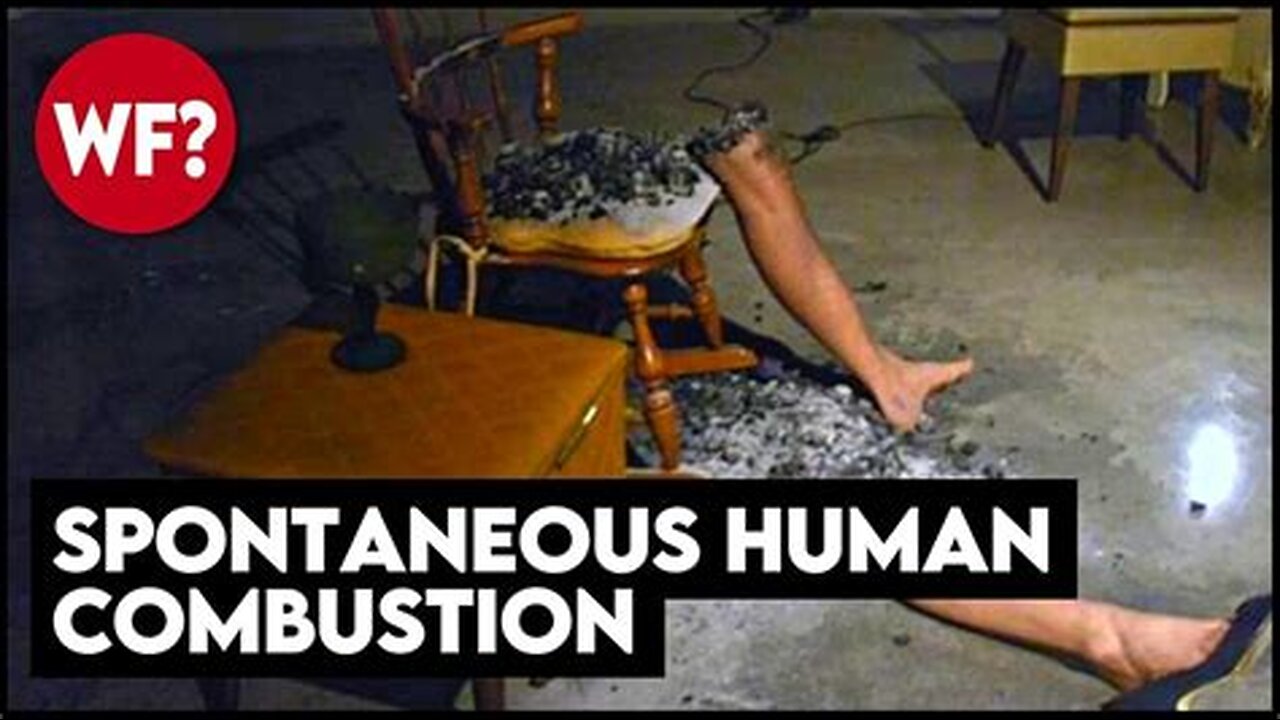Premium Only Content

Spontaneous Human Combustion: Unraveling the Enigma of the Fiery Phenomenon
Throughout history, few phenomena have captivated—and baffled—scientific inquiry and public imagination quite like spontaneous human combustion (SHC). Defined by the sudden and inexplicable ignition of the human body without an identifiable external source of flame, SHC straddles the boundary between forensic science, folklore, and unexplained mystery.
Historical Context and Cases
Documented accounts of SHC date back centuries, with the first notable mention recorded in 17th-century medical texts. The most iconic case occurred in 1951, involving Mary Reeser, whose body was reduced nearly entirely to ash while the surrounding environment remained astonishingly intact. Such cases frequently share peculiar commonalities:
• Extreme body destruction
• Minimal damage to surroundings
• Remaining extremities (hands, feet) sometimes untouched
Scientific Hypotheses and Explanations
Despite sensationalism surrounding SHC, serious scientific analyses have emerged:
• The Wick Effect:
The leading explanation posits the “wick effect,” in which body fat acts similarly to candle wax, human tissue functions as a wick, and ignition sources (such as cigarettes or sparks) initiate prolonged, slow combustion. This theory aligns with laboratory experiments and forensic evidence from documented cases.
• Chemical Reactions within the Body:
Alternative hypotheses suggest rare biochemical reactions could trigger combustion, perhaps involving highly flammable gases generated internally. This explanation, however, lacks substantial experimental verification and remains speculative.
• Static Electricity and External Triggers:
Some theories propose ignition through static electricity buildup or electromagnetic anomalies. These suggestions, although intriguing, are often criticized for lacking reproducibility and empirical evidence.
Parapsychological and Cultural Interpretations
SHC has also attracted esoteric interpretations, historically interpreted as divine punishment or supernatural intervention. Modern cultural representations often portray SHC metaphorically, symbolizing extreme psychological or emotional distress manifesting physically.
Critical Analysis and Societal Implications
From a scientific perspective, SHC provides an opportunity to discuss the boundaries of forensic analysis and the importance of rigorous investigation when encountering unexplained phenomena. The discussion highlights broader societal tendencies to mythologize events that defy immediate understanding, reflecting human fascination with the mysterious and macabre.
Educational Significance and Broader Reflections
Studying SHC underscores crucial lessons:
• Importance of skepticism balanced with open-minded inquiry
• Recognition of cognitive biases in interpreting unexplained phenomena
• Significance of interdisciplinary collaboration to address complex mysteries
Conclusion: Beyond Combustion—A Call for Continued Inquiry
Spontaneous human combustion remains a compelling intersection of forensic science, chemistry, human biology, and cultural psychology. While scientific consensus largely favors rational, empirical explanations, SHC continues to provoke profound reflection on the limits of scientific understanding, the nature of human physiology, and the enduring allure of mystery.
Ultimately, the ongoing fascination with spontaneous human combustion reminds us of our collective desire to seek understanding even when confronted with phenomena that resist easy explanation. In doing so, SHC remains not merely a curiosity, but an essential touchstone for critical thinking and scientific curiosity.
-
 2:45
2:45
FragmentsOfTruth
3 days agoTHE MONSTER STUDY
208 -
 21:24
21:24
marcushouse
10 hours ago $0.06 earnedStarship Flight 10: Go or No? 🚀
14.3K10 -
 LIVE
LIVE
MrR4ger
15 hours agoSUNDAY FUNDAY w/ R4GER - VARIETY / DIABLO 4/ FOR HONOR / ETC?
102 watching -
 5:40
5:40
WhaddoYouMeme
3 days ago $0.19 earnedThey’re Calling This the End of Masculinity
18K14 -
 15:24
15:24
Tactical Advisor
18 hours agoBest 2011 of 2025 | Bul Armory Ultralight Pro
21.8K -
 27:31
27:31
True Crime | Unsolved Cases | Mysterious Stories
2 days ago $0.11 earnedThe Hong Kong Schoolgirl Mystery – 5 Mysterious Unsolved Cases (Part 8)
17.1K2 -
 7:19
7:19
China Uncensored
1 day agoChina is DONE in the South China Sea
14.4K26 -
 5:17:07
5:17:07
Joe Donuts Live
5 hours ago🟢 Loot Rats Unleashed: Arena Breakout Chaos! | Joe + Tony + Vlad
25.5K1 -
 30:37
30:37
Degenerate Plays
17 hours ago $0.01 earnedThis College Is Out Of Control - GTA Online : Part 9
8.92K -
 16:28
16:28
Mrgunsngear
3 days ago $0.50 earnedBeretta 92XI SAO Sabbia Review - A Few Surprises
10.5K6